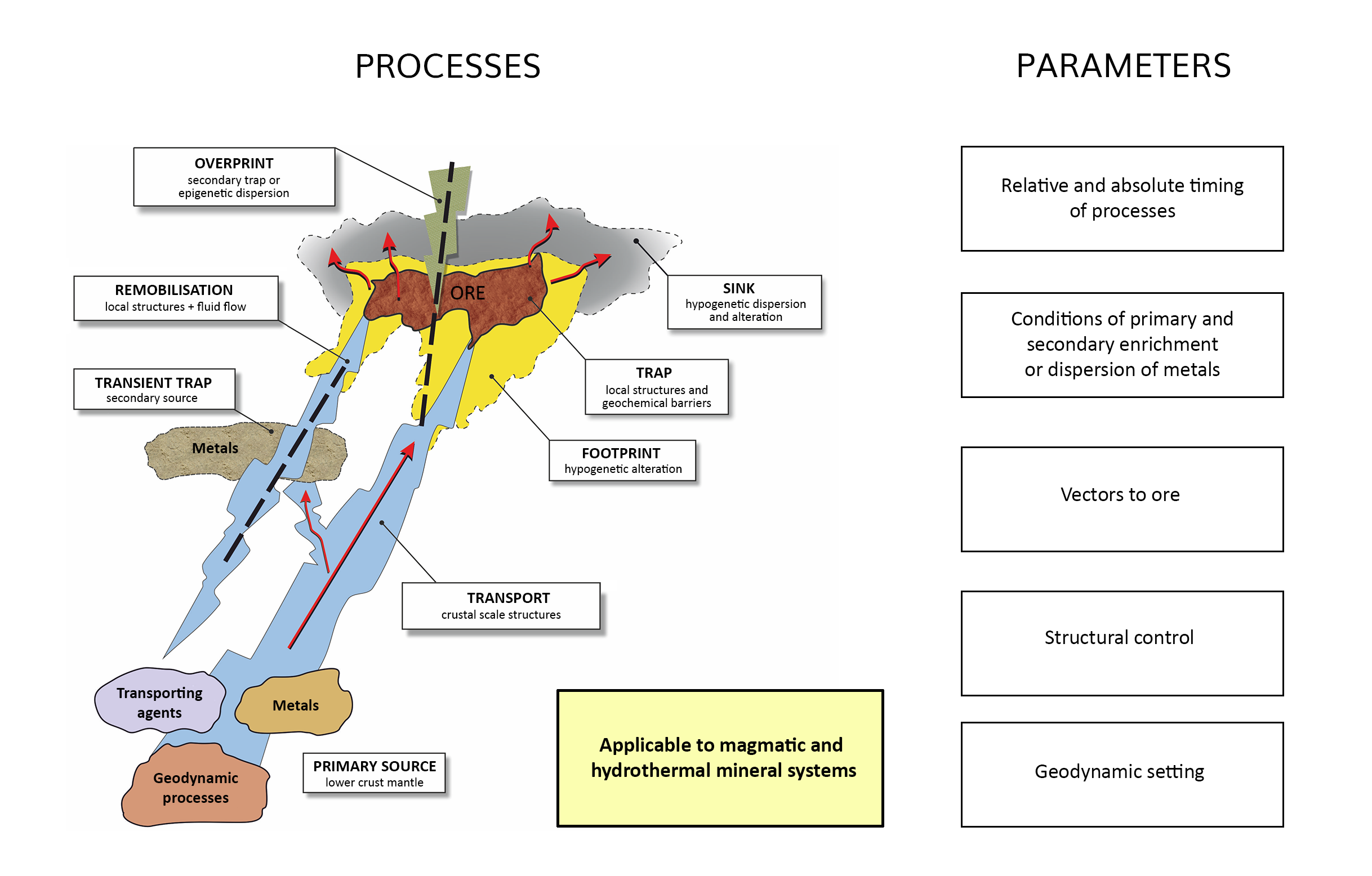Mineral Systems
Ore formation processes are part of larger craton-scale geological events. Ore formation reflects extensive tectonic and geochemical development history.
Mineral system analysis defines the processes and parameters critical to ore formation. The mineral system model can be used as an aid in the selection of ore exploration sites.
The website Mineral Systems of Finland — Mineral Systems of Finland — Mineral Systems of Finland was published in 2020. Mineral Systems of Finland – Mineral Systems of Finland (gtk.fi)
Currently, the site contains an ensemble of orogenic gold ore systems.
The mineral system model can be used for the purpose of exploration targeting if the critical processes acting on different scales can be translated into mappable parameters and these parameters are appropriately ranked according to the scale and significance of processes characterizing the selected type of ore. Proper scaling and ranking of mappable parameters is the subject of mineral system analysis. The mineral system analysis may require better characterization of mappable signatures in order to build up capacities for their recognition in the available larger scale datasets. In addition, the application of generalized models without their specification for the evaluated area limits the validity of target generation. If known occurrences of the targeted deposit type within the area under study are available, the manifestation of some critical parameters should be checked at these “training sites”. This approach could especially be valuable in recognition of proximal (trap-site) footprints within the larger system scale footprints of the targeted deposit type. On the other hand, this is that scale level where the data sets of deterministic exploration can be incorporated into the data base of a probabilistic exploration targeting based on mineral system analysis.
Independently from the type of ore deposit, the large number of earth-system scale variables can be reduced to a few major geological processes which define the major features in a mineral system model applicable to development of exploration models:
- process(es) providing energy for mobilization of ore forming constituents and their transporting media;
- processes creating sources (or transient sources/pre-concentrations) of ore forming constituents and their transporting media;
- processes creating transportation pathways from the sources to the site(s) of ore deposition;
- physical and chemical processes creating barriers (traps) for ore deposition or formation of secondary sources (transient traps/pre-concentrations) of ore forming constituents;
- processes leading to the formation of footprints of transportation, deposition, dispersion (sink) and re-mobilization of the ore-forming components;
- processes needed to preservation (or modification) of the ore deposit
Processes providing energy for material transport and development of transportation pathways from the source to sink are defined by the tectonic setting which is variable during the geodynamic evolution of an area. Therefore, the geodynamic evolution and structural architecture of the crust are fundamental parameters of a mineral system. These parameters also define processes leading to the opening up of primary reservoirs (such as the fertile zones of the mantle, metasomatised zones of subcontinental lithospheric mantle or specific regions of crust) or secondary reservoirs (such as specific lithological units where pre-concentrations of metals or metal transporting ligands took place) acting as sources of ore forming constituents. Parameters of primary and secondary processes of metal enrichments are defined by thermal or geochemical gradients which usually also outline footprints of mineralization processes. The timing of processes is a fundamental mineral system parameter as spatial coincidence of potential sources, transporting structures and geochemical barriers alone does not necessarily mean that they are the parts of the same mineral system. As processes are acting on different scales, their parameters also have a scale-related hierarchy. For example, the parameters of the geodynamic evolution are acting on crustal/terrane scale whereas traps are localized in a small volume of the crust (deposit scale).
